Welcome to the enchanting world of owls in Minnesota! Did you know that Minnesota is home to a diverse array of owl species, each with its own unique characteristics and allure? From the majestic Great Horned Owl to the elusive Boreal Owl, these captivating creatures have captured the imaginations of bird enthusiasts and nature lovers alike. So, prepare to embark on a journey of discovery as we introduce you to the 12 awe-inspiring owls that call Minnesota their home.
Key Takeaways:
- Minnesota is home to a variety of owl species, each with its own captivating features.
- From the Eastern Screech-Owl to the Snowy Owl, we’ll explore the most common owls of Minnesota.
- Discover the unique characteristics and habitats of owls found in the wilds of Minnesota.
- Uncover the hidden treasures among Minnesota’s owl population, including the Burrowing Owl and the Boreal Owl.
- Explore the northern reaches of Minnesota and encounter the Northern Hawk-Owl and the Great Grey Owl.
The Common Owls of Minnesota
Minnesota is home to a diverse array of owl species, but there are four that stand out as the most commonly found in the state. Each of these owls possesses its own unique characteristics and charm.
1. Eastern Screech-Owl

The Eastern Screech-Owl is known for its distinctive call that can be described as hauntingly beautiful. Despite its name, this owl does not actually screech but instead produces a melodic trill that echoes through the night. With its small size and mottled plumage in shades of gray and brown, the Eastern Screech-Owl is a master of camouflage.
2. Great Horned Owl

The Great Horned Owl is a true icon of the owl world, revered for its size and strength. With its large yellow eyes and prominent ear tufts, this owl has a commanding presence. It is a formidable hunter, capable of taking down prey much larger than itself. The Great Horned Owl is known for its deep hooting sound that can be heard during the night.
3. American Barn Owl
The American Barn Owl stands out with its stunning white plumage and heart-shaped face. This owl is a symbol of grace and elegance, gliding silently through the night in search of prey. Its specialized feathers enable it to fly almost completely silently, making it an expert hunter. The American Barn Owl is particularly fond of open fields and farmlands.
4. Barred Owl

The Barred Owl is famous for its deep hooting sound that resembles the phrase “Who cooks for you? Who cooks for you all?” This owl has a distinctive appearance with its brown plumage marked by horizontal bars. It has dark eyes and lacks ear tufts, making it easily recognizable. The Barred Owl is often found in dense forests near water sources, where it hunts for small mammals.
| Owl Species | Distinctive Features | Habitat |
|---|---|---|
| Eastern Screech-Owl | Distinctive call, mottled plumage | Woodlands, urban areas |
| Great Horned Owl | Large size, prominent ear tufts | Various habitats, including forests and urban areas |
| American Barn Owl | White plumage, heart-shaped face | Open fields, farmlands |
| Barred Owl | Deep hooting sound, barred plumage | Dense forests near water sources |
Owls of the Wilds
Venture into the wilds of Minnesota and discover the incredible owls that call this state home. In this section, we will introduce you to three fascinating owl species that inhabit Minnesota’s forests and open areas. Get ready to learn about the Short-eared Owl, the Long-eared Owl, and the Northern Saw-whet Owl.
5. Short-eared Owl
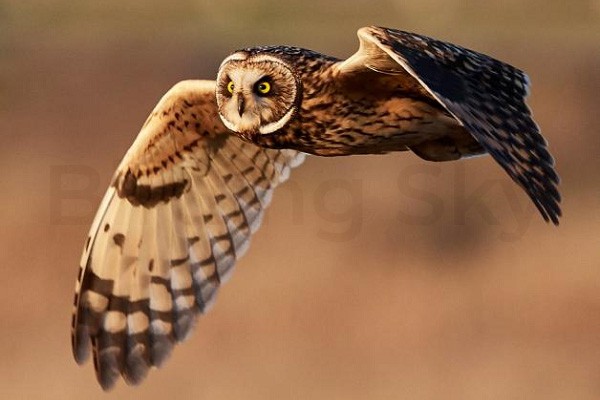
The Short-eared Owl is widely recognized for its distinctive facial disc, which helps it locate prey by capturing sound. This owl species can be found in a variety of habitats, including grasslands, marshes, and prairies. Known for its exceptional hunting skills, the Short-eared Owl can often be seen flying low over these areas in search of small mammals.
6. Long-eared Owl
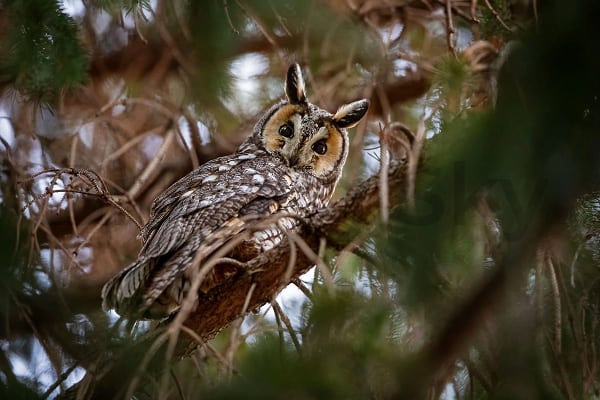
The Long-eared Owl is easily identified by its long, feathered ear tufts that resemble cat-like ears. This owl species prefers dense forests as its habitat, where it can find ample cover and a diverse range of prey. Despite being a relatively common owl species, the Long-eared Owl is notoriously difficult to spot due to its incredible camouflage abilities.
7. Northern Saw-whet Owl
The Northern Saw-whet Owl is a small and secretive owl that mainly resides in Minnesota’s coniferous forests. Measuring just about seven inches in height, this owl species has a distinctive high-pitched call that resembles the sounds made when sharpening a saw. Even though it is considered one of the smallest owls in North America, the Northern Saw-whet Owl is an excellent predator and feeds primarily on small rodents.
Rare and Elusive Owls
In this section, we will uncover the hidden treasures among Minnesota’s owl population. Prepare to be amazed as we delve into the unique characteristics of the Burrowing Owl, the Snowy Owl, and the Boreal Owl.
8. Burrowing Owl
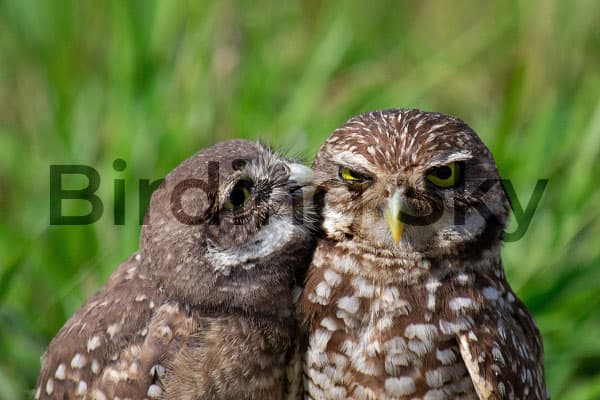
The Burrowing Owl, with its ground-dwelling habits, is a fascinating species to observe. Unlike other owls, it creates its nests by burrowing into the ground, hence its name. These small owls are known for their long legs and distinctive expressions that make them look perpetually surprised. Their engaging behavior and active lifestyle make them a favorite among birdwatchers.
9. Snowy Owl
The magnificent Snowy Owl is a true symbol of the Arctic, with its striking white plumage and piercing yellow eyes. These owls spend their summers in the far northern regions and migrate south during the winter months, making rare appearances in Minnesota. Their adaptability to cold environments and impressive hunting skills make them a sight to behold. Witnessing a Snowy Owl in flight or perched atop a snow-covered landscape is an experience you won’t soon forget.
10. Boreal Owl
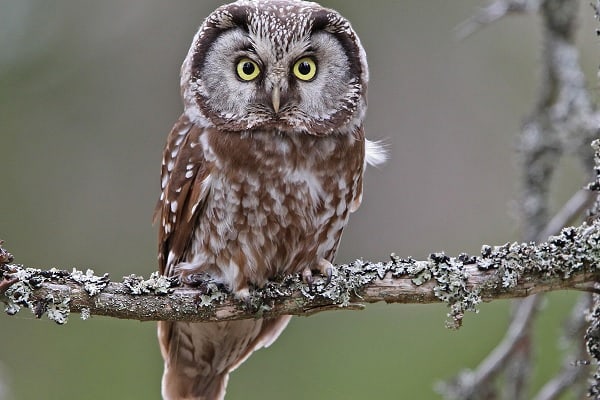
The Boreal Owl is a master of silent flight and a resident of Minnesota’s boreal forests. With its small size and mottled brown feathers, it possesses excellent camouflage abilities, allowing it to blend seamlessly into its surroundings. Despite its small stature, the Boreal Owl has a powerful call that can be heard echoing through the forest during the night. Spotting this elusive owl requires patience and a keen eye, but the reward is a glimpse into the mysterious world of Minnesota’s Northwoods.
Other Owl Species in Different Regions
Minnesota’s Northern Hunters
As we venture to the northern reaches of Minnesota, we encounter two awe-inspiring owl species – the Northern hawk owl and the Great Grey Owl. These magnificent hunters command attention with their unique characteristics and vital roles within Minnesota’s ecosystem.
11. Northern Hawk-Owl
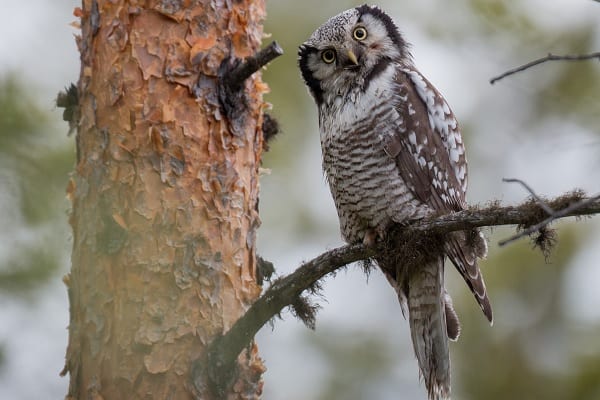
The Northern Hawk-Owl, with its remarkable eyesight and exceptional agility, is a true master of hunting on the wing. Its ability to spot prey from great distances and effortlessly maneuver through the dense forest canopy is truly remarkable. This species possesses the skills and adaptations necessary to thrive in the harsh northern climate.
On the other hand, the Great Grey Owl reigns as the largest owl species in Minnesota. Its impressive size and striking facial disc pattern make it a majestic sight to behold. With a wingspan reaching up to five feet, this owl gracefully glides through the northern forests, utilizing its exceptional hearing to detect and capture elusive prey.
Both the Northern Hawk-Owl and the Great Grey Owl play crucial roles in maintaining the balance of Minnesota’s ecosystem. By keeping populations of small mammals and birds in check, these owls contribute to the overall health and diversity of the region’s wildlife. Witnessing these magnificent hunters in action is an experience you won’t soon forget.
